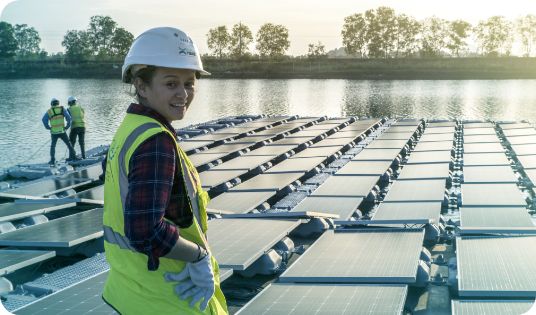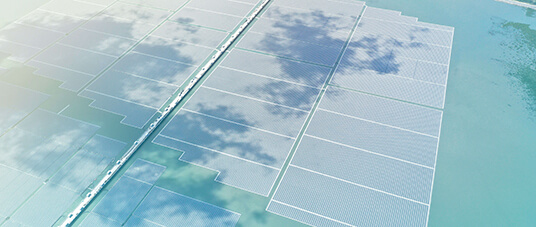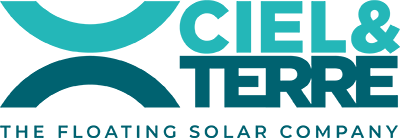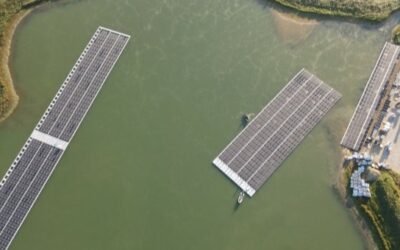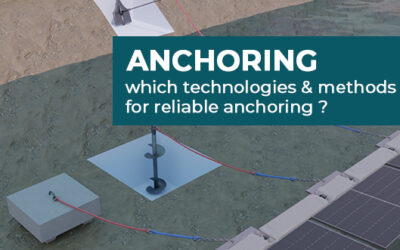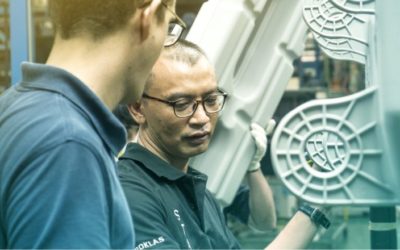Ciel & Terre rapidly understood that to plan safe and long-lasting solar powered platforms we need to design ingenious FPV anchoring methods. In this article, you are going to find out how our R&D and project design teams proceed to offer you solutions that utmost answer your site’s requirements.
The environment generates loads, key for a suitable FPV anchoring design
Obviously, the anchoring systems guarantees the fixation of the floating system to the ground. Beside this, it enables adaptation to water movements like level variations vertically and waves movements or water flow horizontally.

An environment that is sometimes complex

If some environments present for instance low environmental loads like inner countryside ponds, some on the contrary undergo harsher conditions. Natural events can be at the origin of these loads like tides near shore, requiring specific anchoring calculations (as done for our Changbin project, 88 MWp near shore in Taiwan). Typhoons are other natural occurrences which condition a deeper detailed anchoring study since the wind pressure can be very high and irregular.
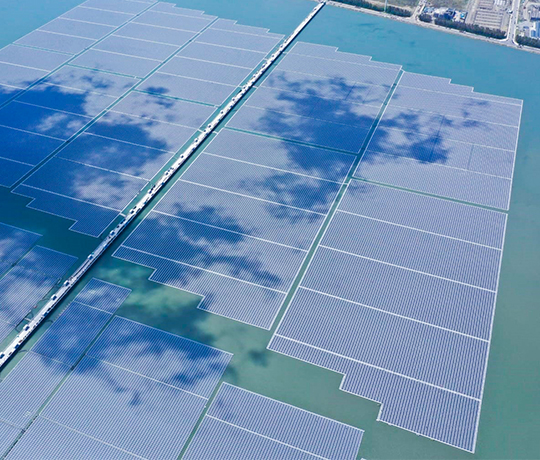
Changbin floating solar project in Taiwan,
Installed on a near shore pond
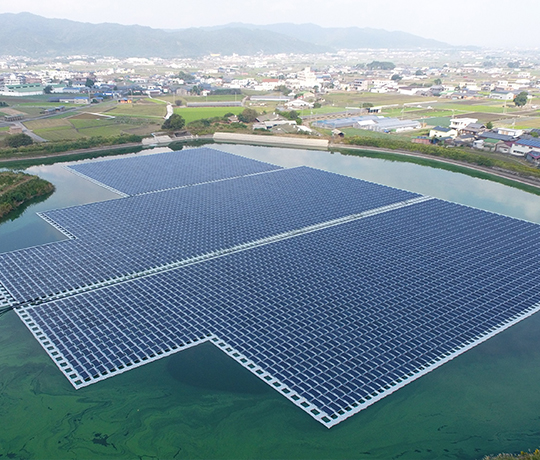
Hanaoka Ike floating solar project in Japan,
Installed on an irrigation pond
In addition to the environment, constraints can also come from the function of the reservoir. Dry ponds for example require a specific anchoring study since the system needs to be compatible with a complete discharge of the pond. Not to mention hydrodams FPV application where water level can be a constraint since it can vary a lot. In other cases, some ponds do not present a big shift in variation, but their water level fluctuates frequently. As a result, it implies the necessity of a comprehensive anchoring study in order to design a system resistant enough to resist repetitive upward and downward movements.
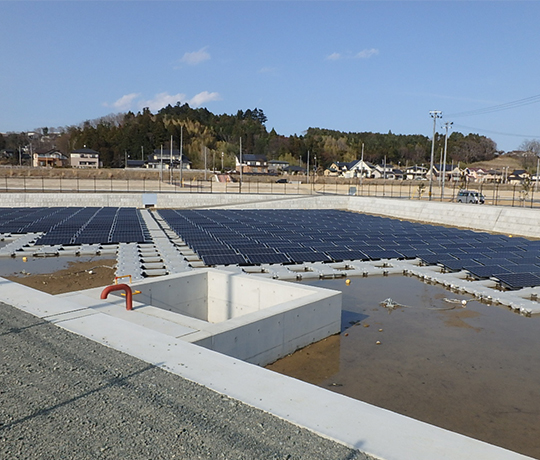
Narahamachi floating PV project,
Installed on a water storage pond
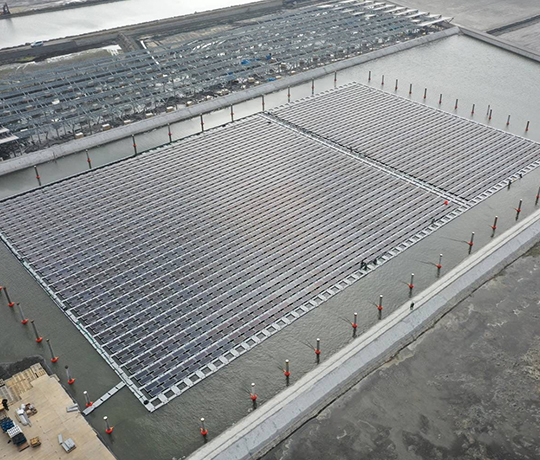
Taixi floating PV project in Taiwan,
Installed on a fishpond
Transpose the environment constraints into a reliable anchoring design
At Ciel & Terre, we put our experience into practice. Indeed, with over 10 years dedicated to floating solar, we have elaborated an efficient anchoring design process that relies on skillful teams and especially thought tools.
Our specialized FPV anchoring teams of experts
First of all, one of our main strengths is to have dedicated anchoring teams. The first one is R&D oriented to develop new systems, ever smarter anchoring solutions. The second focuses on designing the anchoring for projects. The latter are locally integrated in every office, which make them particularly aware of the contexts on their geographical area. As part of our collective spirit, each team also benefits from the experience of the others. On their side, the R&D anchoring team is also well aware of the different stakes to be tackled locally.
However, the collaboration does not stop at and within the anchoring department. Above all, it is our cross-department communications which make our experience that reliable and complete at all stages. For instance, our anchoring teams communicate tightly with the construction team. The objective is to have relevant feedback from the field and constantly improve the installation processes. In addition, we provide multiple engineering services to fully understand your site’s specificities before starting construction.
Discover the key design parameters for your FPV power plant :
Working closely with trusted FPV anchoring partners
Considering the anchoring importance, our teams work with a design process validated by Bureau Veritas and we collaborate with expert partners to complete our knowledge where it is needed. Obviously, the tools we choose to conduct our simulations are also a key for the relevancy of the anchoring measurements and viability. Last but not least, we also happen to monitor floating PV plants to validate our anchoring knowledge, and we can also suggest sensors use.
To conclude, our return on experience is quite valuable. The diversity and uniqueness of every project we conducted are actually our best assets. So far our floating solar systems are used 30 countries worldwide for more than 250 projects (300 projects in 2024) for which we have designed the anchoring. For a large proportion of them, we proceeded to their installation. The alliance we make between continuous R&D and lessons learned in the field is a solid foundation that reinforces our will and commitment to consider ever more applications.
By Laura, marketing
